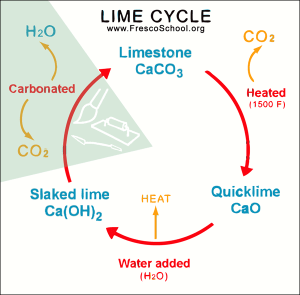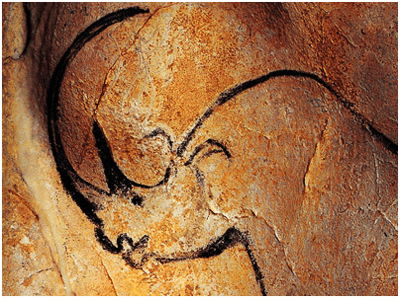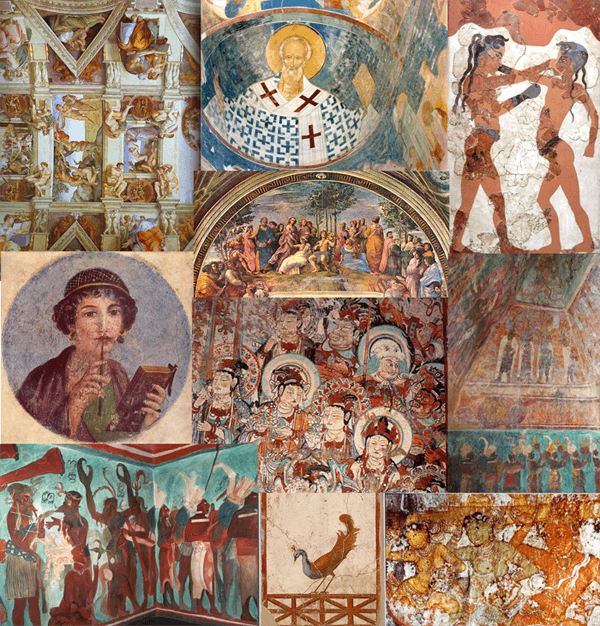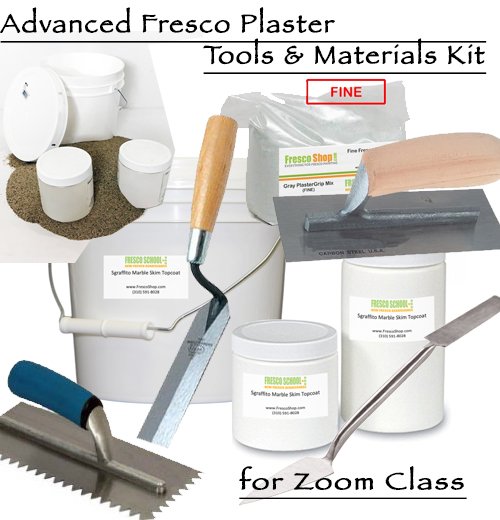 The key to understanding the medium of fresco is the Lime Cycle:
The key to understanding the medium of fresco is the Lime Cycle:
This illustrated guide will outline the main concept of the fresco medium, its process, historical perspective, techniques.
Slaked Lime is mixed with the inert aggregate such as, any and all – sand, crashed marble, pozzolan (tuff – consolidated volcanic ash), etc. General mixing proportion is one (lime) to two (aggregate), however proportions may vary based on style or application. The work must be completed during the formation of the Calcium Carbonate.
1 – The Medium of Fresco – Carbon Based Art for Carbon Based Life
Fresco Painting refers to a method of painting or coloring of the object using lime resistant natural pigments (mostly ferric oxides) where the pigment is bound to the surface through the chemical reaction known as carbonatation*:
Ca(OH)2 + CO 2 → CaCO3 + H2O
The resulting mineral, Calcium Carbonate (calcite, limestone, marble) becomes a binder making the Medium of Fresco to be the most permanent painting/coloring medium there is!
[wc_highlight color=”yellow”]Painting in fresco is like Painting with “Molten Marble”![/wc_highlight]
*The process of forming a carbonate is sometimes referred to as “carbonation”, although this term usually refers to the process of dissolving carbon dioxide in water. Carbonation also describes the incorporation of carbon dioxide into chemical compounds. Our carbon-based life originates from a carbonation reaction that is most often catalyzed by the enzyme RuBisCO. So important is this carbonation process that a significant fraction of leaf mass consists of this carbonating enzyme.
Building materials is a small portion of a long list of uses for the Calcium Carbonate including industrial, biochemistry, medicine, agriculture as well as a variety of health, dietary and environmental applications. Calcium Carbonate is also a main part in coral, most seashells, eggshells and our bones.
Calcium Carbonate and Natural Pigments make the Medium of Fresco the most environmentally safe medium.
[wc_highlight color=”yellow”]The Medium of Fresco is a Symbol of “Green Technologies” in Art.[/wc_highlight]
2 – Brief History of Fresco
The history of fresco painting has begun thousands of years ago in the lime stone caves across the world. People that lived there painted their stories on its walls using naturally pigmented “dirt.” The process of the formation of the calcite on moist limestone walls of the caves has permanently bound pigment particles to the walls encapsulating them into the newly formed crystals of calcium carbonate (CaO3) creating “accidental frescoes”.

The discovery of this method of painting as the actual painting process has happened independently in every civilization at the same time as the discovery of making lime mortar. As people learned to build using lime mortars they noticed that if the building is painted while the mortar in plastered (stuccoed) walls is still wet the color will not peel or be washed off by the rain. The rest is history!

3 – The Form and The Style
The Wall painting is the most studied and referred to form of use of the medium of fresco. However it is not the only form that the medium of fresco can be and has been used. Among classic examples of wall paintings of Mediterranean (Europe), Pre-Columbian Americas, Modern Latin America (Mexico), Russia, China and Africa there are contemporary works in fresco that break the stereotype of fresco being only a wall painting.

The style is simply a manner of doing or presenting things, a culture defined hierarchy of the form. As all mediums (fresco, oil, acrylic, etc.), fresco is form and style independent, which opens up the whole new world for the artist, cultural and historic dependencies no longer restrict the expression, providing contemporary art world with a fresh start on the millenniums old, most permanent and environmentally safe material.



